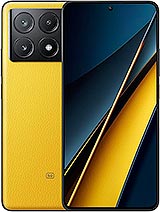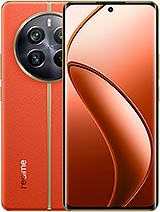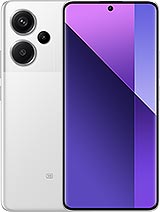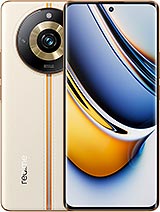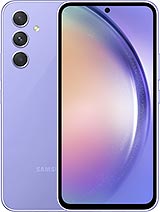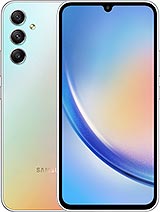Realme 12 Pro+ review

Curved 6.7-inch, 120Hz OLED
The Realme 12 Pro+ inherits the same 120Hz, curved OLED panel with a 6.7-inch diagonal and 1080p resolution. The display has almost all the bells and whistles too - 10-bit color depth, HDR10+ support and 2160Hz PWM dimming for users with sensitive eyes.

Realme doesn't disclose the brand of the tempered glass front, but as mentioned earlier, we are impressed by the tiny bezels and the small camera cutout.
In our tests, the device did as expected - 497 nits of maximum brightness in manual mode and 802 nits in auto mode when exposed to bright sunlight or another bright enough environment. And although not the brightest display around, it's still good enough for excellent legibility out in the sun.
Unfortunately, the Realme 12 Pro Plus' display fails to match the competition in terms of features as well. The handset doesn't support HDR, at least in Netflix, while some alternatives even have Dolby Vision. You get served HDR-capable videos on YouTube, though. Widevine L1 certification is available, so you can watch Netflix content but without HDR.
Refresh rate
The device has three modes - Auto Select, high and Standard. The High and Auto modes work in a similar way - they use the maximum 120Hz across the user interface and some supported apps, and switch to 60Hz for static picture, video playback (but not video UI) and incompatible apps like Google Maps and Camera app.
The Auto Mode is a bit more restrictive - it analyzes the app, and then decides if it's worth using 120Hz or not. We found that many apps, like web browsers, video apps like Netflix, office apps, among others to be limited to 60Hz.
The only time we saw the screen use 90Hz was on the lockscreen.
Finally, the Standard option is straightforward - the phone always uses 60Hz refresh rate, and all apps are capped at 60fps.
Battery life
Our new Active Use Score is an estimate of how long the battery will last if you use the device with a mix of all four test activities. You can adjust the calculation based on your usage pattern using the sliders below. You can read about our current battery life testing procedure here. For a comprehensive list of all tested devices so far, head this way.
The device runs on a standard 5,000 mAh battery, just like its predecessor, but the new Snapdragon 7s Gen 2 should, in theory, offer better overall efficiency. And for the most part, the real life tests prove that to be true. The Realme 12 Pro+ has slightly longer battery life with improved talk time and web browsing. However, the Active Use Score is only slightly higher than last year's Realme 11 Pro because there's no change in the video playback time and the gaming endurance is more than an hour shorter.
Compared to the competition, the Realme 12 Pro+ pulls ahead in almost every category. The handset scores higher in talk time, browsing and video playback and only falls short in the gaming test. And even there it's not far behind.
Charging speed
Unfortunately, the Realme 12 Pro+ takes a step back when it comes to charging speed. Not necessarily compared to its rivals, but compared to its predecessor. The Realme 11 Pro+ supports 100W charging, while the newer 12 Pro+ settles for 67W.

In practice, however, the difference isn't as big. The newer model gets to 49% in just 15 minutes (as opposed to 63% achieved by its predecessor), while a full charge takes about 43 minutes, up from 28 minutes for the 11 Pro+.
When we pit the 12 Pro+ against its competitors, the handset seems to be mostly on par with them. The Redmi Note series are a tad faster, though.
Speakers
Тhe handset retains the same stereo speaker setup used in the last few generations, meaning it's a hybrid setup with the top speaker doubling as an earpiece. The also implies that the bottom-firing speaker will always sound a bit louder.
There's no change in the sound tuning from last year with a fairly balanced output, although the bottom speaker sounds a bit more bass-y. Loudness-wise, the handset gets a "Very Good" score at -26.0 LUFS.
Use the Playback controls to listen to the phone sample recordings (best use headphones). We measure the average loudness of the speakers in LUFS. A lower absolute value means a louder sound. A look at the frequency response chart will tell you how far off the ideal "0db" flat line is the reproduction of the bass, treble, and mid frequencies. You can add more phones to compare how they differ. The scores and ratings are not comparable with our older loudspeaker test. Learn more about how we test here.
Reader comments
- erremmephot0
- 16 Aug 2024
- BPp
hi all, seems that it shots in RAW only with primary camera an only at 1x, so non RAW in telephoto 3x or with primary at 2x? Does someone knows if it was "solved" with an update or if it's possible with GCam? Thanx for answering.
- Fa14bi
- 09 Jul 2024
- mVv
Yes, the resolution is 3 times as high, but the sensor crop of 3 times also only has 0.31μm² in surface area per pixel, while the 12pro+ has 0.49μm² per Pixel. You can also bin to 16MP and you have close to 1.96μm2 of surface per Pixel, ...
